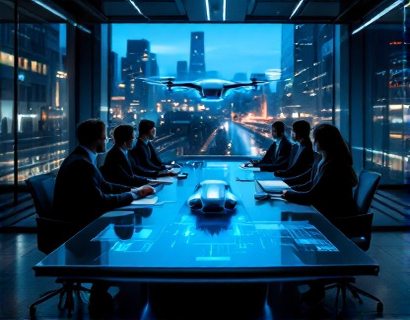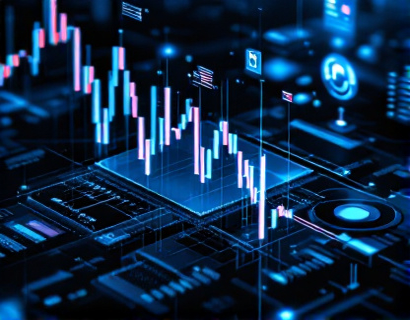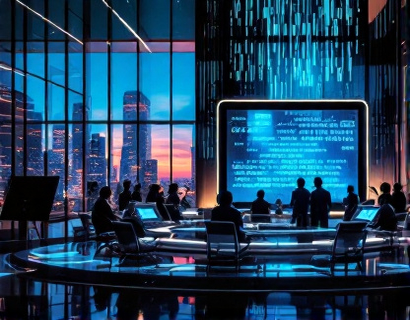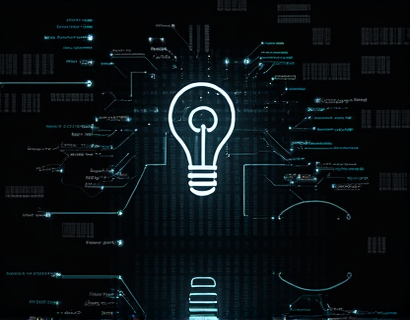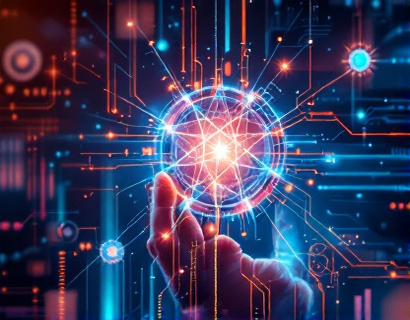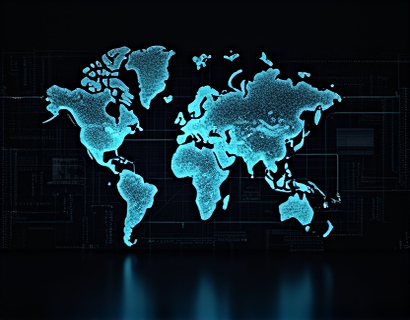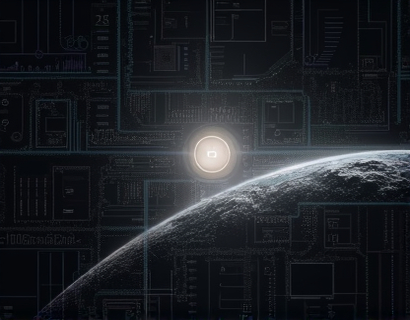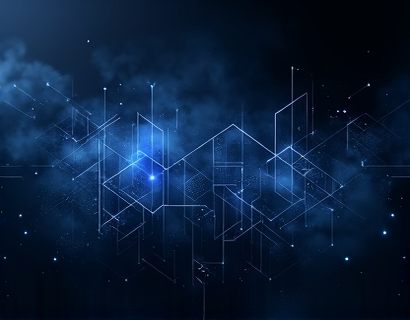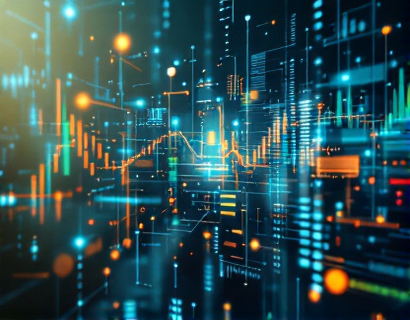Maximizing Ucosystem Engagement: Harnessing Crypto and AI for Enhanced App Experiences
The digital landscape is rapidly evolving, driven by the convergence of blockchain technology and artificial intelligence. This transformation is reshaping how applications are designed, delivered, and interacted with, offering unprecedented opportunities to maximize user engagement and drive innovation. This article delves into the intricate ways crypto and AI are revolutionizing Ucosystem applications, providing tech enthusiasts and professionals with essential insights into the future of digital solutions.
The integration of blockchain and AI in Ucosystem applications is not just a trend but a fundamental shift in how we approach software development and user interaction. By leveraging the decentralized and secure nature of blockchain, combined with the intelligent capabilities of AI, developers can create applications that are not only more secure and transparent but also more intuitive and personalized.
Blockchain: The Backbone of Trust and Security
Blockchain technology, at its core, is a decentralized ledger that ensures transparency, immutability, and security. In the context of Ucosystem applications, blockchain serves as the backbone, providing a trustless environment where users can interact without intermediaries. This is particularly crucial for applications involving financial transactions, identity verification, and data sharing.
One of the key benefits of using blockchain in Ucosystem apps is the enhancement of user trust. By ensuring that data is tamper-proof and transparent, users are more likely to engage with applications that prioritize their data security. For instance, in financial apps, blockchain can provide a verifiable and secure record of transactions, reducing the risk of fraud and increasing user confidence.
Moreover, blockchain enables the creation of decentralized applications (dApps) that operate on a peer-to-peer network. These dApps can offer features such as decentralized finance (DeFi), non-fungible tokens (NFTs), and decentralized identity management. By integrating these features, Ucosystem applications can attract a broader user base, including those interested in the crypto space.
AI: The Brain Behind Personalization and Intelligence
Artificial intelligence, on the other hand, brings the element of intelligence and personalization to Ucosystem applications. AI algorithms can analyze vast amounts of data to understand user behavior, preferences, and patterns, enabling applications to deliver tailored experiences. This level of personalization is crucial for keeping users engaged and satisfied.
In the realm of customer service, AI-powered chatbots and virtual assistants can provide instant and accurate responses to user queries, enhancing the overall user experience. These AI-driven tools can operate 24/7, ensuring that user needs are met at any time, which is a significant advantage over traditional customer support systems.
Furthermore, AI can be used to optimize application performance and user interface. Machine learning algorithms can analyze user interactions to identify areas for improvement, such as streamlining navigation or enhancing load times. This continuous optimization ensures that the application remains user-friendly and efficient, reducing friction and increasing engagement.
Synergy Between Blockchain and AI
The true power of combining blockchain and AI lies in their synergistic capabilities. When these technologies are integrated, they can create Ucosystem applications that are not only secure and transparent but also highly intelligent and adaptive. This synergy opens up new possibilities for enhancing user engagement and driving innovation.
For example, in a decentralized social media platform, AI can be used to curate content based on user preferences, while blockchain ensures that user data and content ownership are protected. Users can earn tokens for creating and sharing content, fostering a community-driven ecosystem where value is distributed fairly.
Another area where blockchain and AI can work together is in supply chain management. A Ucosystem app can use blockchain to track the origin and movement of products, ensuring transparency and authenticity. AI can then analyze this data to predict demand, optimize inventory, and identify potential bottlenecks, providing a seamless and efficient user experience.
Enhancing User Engagement Through Gamification and Incentives
Gamification and incentive mechanisms are powerful tools for boosting user engagement, and when combined with blockchain and AI, they become even more effective. Blockchain can facilitate the creation of token-based reward systems, where users earn tokens for completing tasks, participating in discussions, or contributing value to the community.
AI can enhance these systems by dynamically adjusting rewards based on user behavior and engagement levels. For instance, an AI-driven system can analyze user interactions and offer personalized rewards that are most motivating for each user. This personalized approach ensures that users remain engaged and motivated to continue using the application.
Moreover, blockchain ensures that these rewards are securely and transparently distributed, eliminating the risk of fraud or manipulation. Users can track their rewards and see the value they are accumulating, which increases their sense of ownership and loyalty to the application.
Data Privacy and User Control
In an era where data privacy is a major concern, the combination of blockchain and AI can provide users with greater control over their personal information. Blockchain-based identity management systems allow users to manage their digital identities securely, deciding who can access their data and for what purposes.
AI can complement this by providing users with insights into how their data is being used and offering recommendations for managing their privacy settings. For example, an AI-powered dashboard can analyze user data usage patterns and suggest optimal privacy configurations, ensuring that users feel in control of their digital footprint.
This level of transparency and control not only enhances user trust but also encourages more users to engage with applications that prioritize their privacy and security. In a competitive market, this can be a significant differentiator, attracting users who value their digital rights.
Future Trends and Innovations
As blockchain and AI continue to evolve, we can expect even more innovative applications in the Ucosystem space. One promising area is the development of autonomous applications that can operate with minimal human intervention. These self-sustaining apps can use AI to learn and adapt to user needs, while blockchain ensures that their operations are transparent and secure.
Another trend is the integration of augmented reality (AR) and virtual reality (VR) with blockchain and AI. Imagine a Ucosystem app that uses AR to provide immersive experiences, with AI-driven content generation and blockchain ensuring secure and verifiable interactions. This convergence of technologies can revolutionize industries such as gaming, education, and real estate.
Additionally, the rise of Web3 and the decentralized internet presents new opportunities for Ucosystem applications. By leveraging blockchain-based protocols, these applications can operate on a decentralized network, offering users a more open and democratic digital environment. AI can enhance this by providing intelligent routing and optimization, ensuring that users have the best possible experience.
Conclusion
The integration of blockchain and AI in Ucosystem applications is transforming the digital landscape, offering unprecedented opportunities for maximizing user engagement and driving innovation. By combining the security and transparency of blockchain with the intelligence and personalization of AI, developers can create applications that are not only more secure and efficient but also more engaging and user-friendly.
As the tech landscape continues to evolve, the potential for further advancements is immense. Tech enthusiasts and professionals should stay informed about these developments to harness their full potential and contribute to the creation of a more innovative and user-centric digital world.





